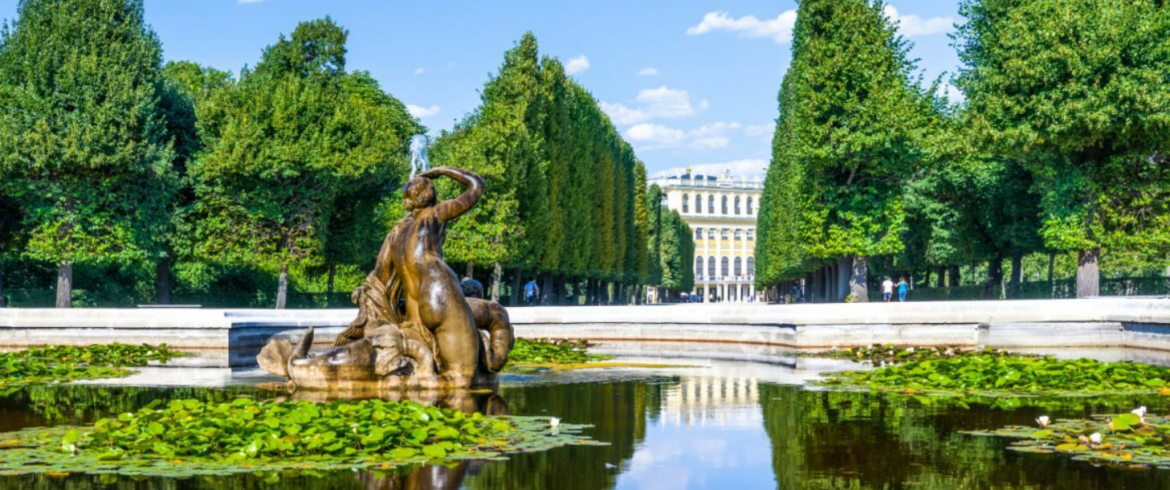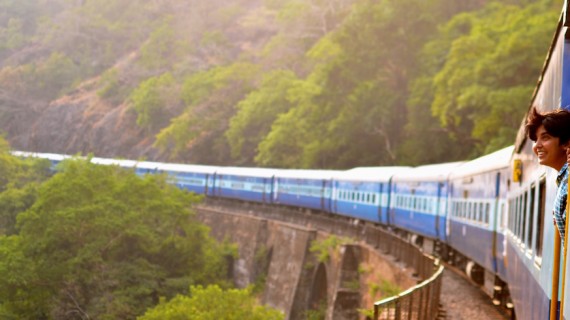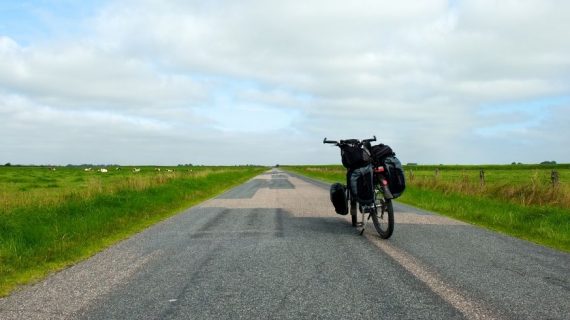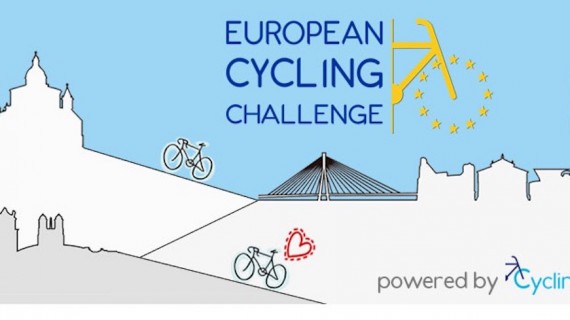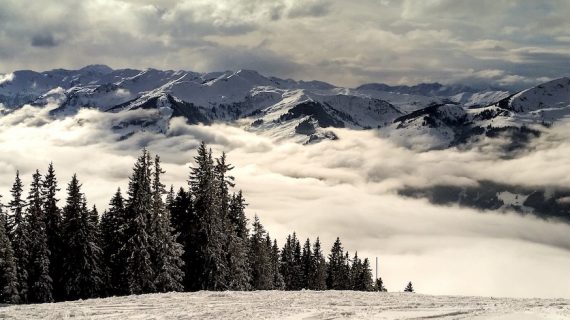The Austrian capital is one of the European cities that best retains the imperial charm that distinguishes it. Vienna in the eighteenth century experienced its maximum moment of splendor, both from an urban point of view, with the completion of the magnificent Schönbrunn palace, and from an artistic point of view, with the symphonies of Mozart, Schubert, and the waltzes of Strauss. Nowadays the city presents itself as a cosmopolitan and modern city, without renouncing its historical past, and can be lived in a sustainable way, through slow itineraries and ecotourism experiences.
How can you reach Vienna?
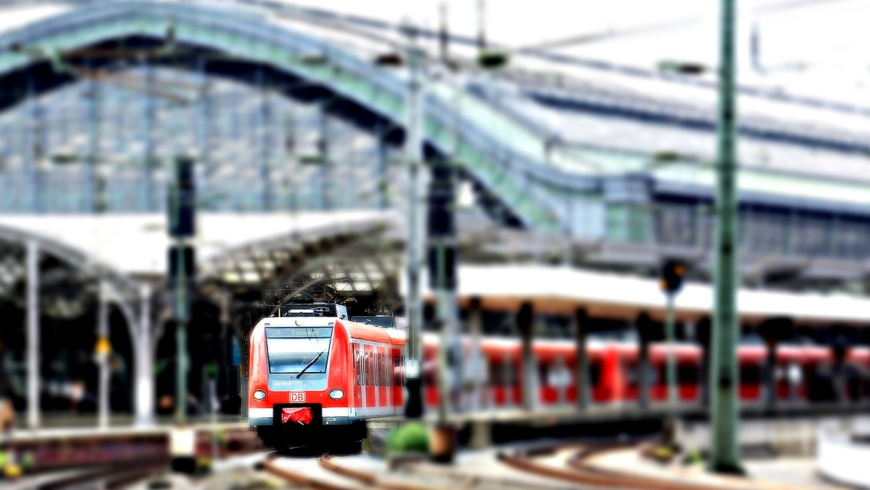
You can reach the Austrian capital by using different means of transport, even though the most sustainable is undoubtedly the train. From Italy, you can reach Vienna from various cities including Milan, Venice, Bologna, Florence, and Rome.
From Milan there is a night train that leaves from Porta Garibaldi at 21 and arrives at its destination at 8.50 in the morning, also stopping in other cities including Brescia, Desenzano del Garda, Peschiera, Verona, Vicenza, and Padua.
Venice is connected to Vienna with both night and day departures, which also stop in Treviso, Conegliano, Pordenone, and Udine. Daytime departures are respectively at 9.56 and 15.52 and allow you to arrive in the Austrian capital in less than 8 hours. The night train leaves at 21.50 and arrives at its destination at 8 in the morning.
If you want to leave from Rome, you can take a night train that leaves at 21.50, passing through Florence at 22.30 and Bologna at 23.45, and then arriving in Vienna at 8.50 in the morning.
Therefore, reaching the city with a more environmentally friendly and most of the time cheaper means of transport (usually the price one way is around 30 euros) is very simple.
How to move around the city in an eco-sustainable way
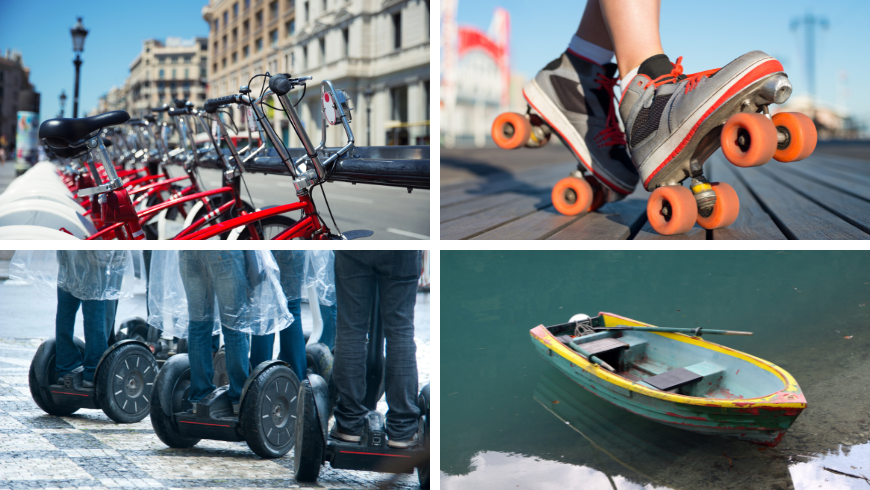
Moving around Vienna in a sustainable way is cheap and at the same time fun. In fact, as well as on foot and by public transport, you can also get around by bicycle, segway, skates, or even by boat. And if you are tired of doing physical activity, you can also call an eco-taxi, a hybrid or electric propulsion vehicle that has the typical “Green Taxi” sign.
Also using the bike is extremely easy, both thanks to the extensive network of cycle paths that covers the city but also thanks to the numerous normal and electric bike rental points. You can also take advantage of the WienMobil service which offers modern bike-sharing, through which you can rent a bicycle in the numerous stations present in various parts of the city.
If you want to enjoy the city without having to work hard, you can also use the segways, a self-balancing scooter that works with a low-consumption electric motor.
Are you a fan of skates or skateboards? Then you can decide to use them for a relaxing walk along the Danube. In fact, every Friday at 21.00 many skaters participate in Friday Nightskating, to demonstrate how fun it can be to move in an ecological way.
On the other hand, if you want to move in an even more alternative way, we recommend renting pedal boats, rowing boats, and sailing boats on the Danube, to enjoy an interesting landscape and a unique experience.
Attractions in Vienna: classic itinerary with an alternative touch
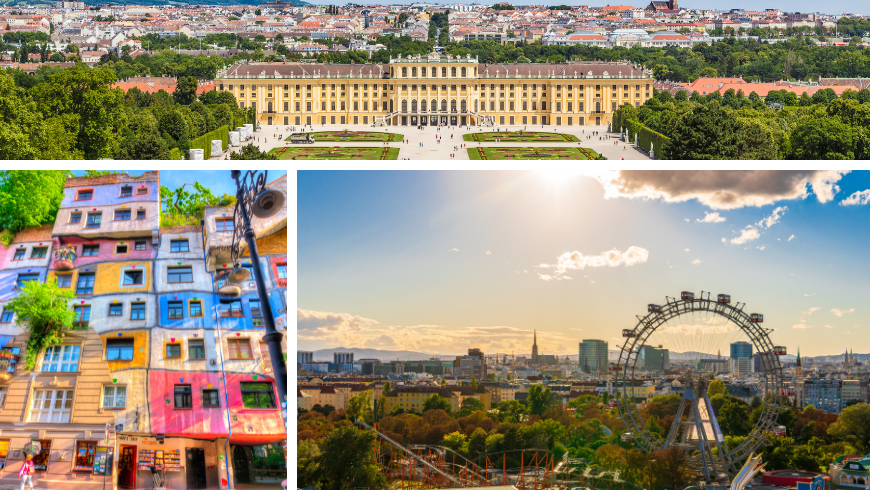
Visiting Vienna, the capital of the Austro-Hungarian Empire and symbolic seat of imperial pomp, you cannot fail to visit the symbolic places of the city such as the Hofburg and Schönbrunn palaces, the majestic St. Stephen’s cathedral, the famous Prater Park and obviously the Belvedere where you can find the Klimt’s “The Kiss”.
However, if you also want to add a few more particular destinations to this classic itinerary, we recommend that you first visit the Landstrasse district, where the architect Hundertwasser created picturesque, asymmetrical, and greenhouses. Here you will find bumps, dizzying spiral staircases, and fountains. If you want to learn more about Friedenreich Hundertwasser and his theory on green architecture, you can visit Kunst Haus Museum. It was the first museum that was able to obtain the Ecolabel in 2018 for its no-waste practices aimed at recycling and the absence of architectural barriers.
Another neighborhood that you should see is about 20 kilometers from the center and is known as the Aspern Seestadt. It is an emerging area, full of palaces, where ecological mobility along with themes like social housing, integration, and inclusion are the masters.
Moving on with the visit of the neighborhoods of the city, we recommend visiting Ottakring, on the west side of the center. It was once a working neighborhood, but nowadays it gathers young artists, while in the Yppenmarkt and Brunnenmarkt markets, you can find fresh vegetables, spices, and exotic fruits. You should visit Freihausviertel, a former artisans’ district, near the historical center. It is now home to bohemian cafés, boutiques, design shops, and numerous art galleries.
Green parks in the city
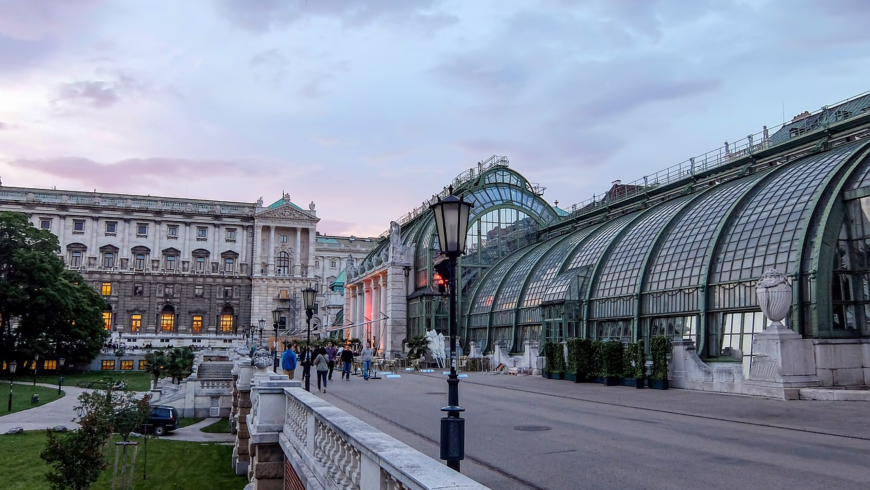
Vienna has some of the most beautiful parks in Europe. In addition to those found inside the imperial residences, we recommend you visit the Stadtpark, full of monuments and sculptures in memory of Viennese composers. The Burggarten, an English-style garden commissioned by Emperor Franz Joseph I, is also worth a visit. Inside you can observe the palm greenhouse, a wonderful Art Nouveau greenhouse that houses a tropical garden inside. If you want to relax, the Sigmund Freud Park, which is located near the University of Vienna is ideal for you. In summer you can freely use the deck chairs located inside the park, to relax and sunbathe. Even the island located in the Danube, 21 kilometers long, is worth a short visit.
Cycle paths you cannot miss
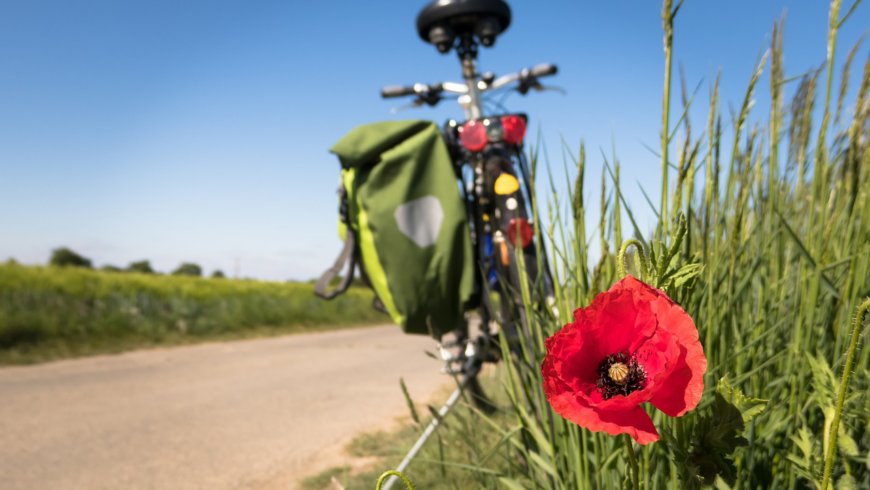
As already said, getting around Vienna by bicycle is extremely simple thanks to its 1.660 kilometers of cycle paths. We, therefore, propose four bike itineraries to discover the city and its surroundings.
Different Itineraries:
The first itinerary that we suggest is a classic tour, around the Ringstrasse. You can start from Stadtpark and is about 5,5 kilometers long. By covering this route you will have the opportunity to admire various monuments including the golden monument of Johann Strauss, the State Opera, the Imperial Palace, the Volksgarten Park, the Museum of Art History, the Museum of Natural History, the Parliament, the Town Hall, the National Theater and the University.
The second itinerary is the one on the Grand Canal of the Danube. The departure is from the artistic structure of the Spittelau incinerator and its length is about 7 kilometres. Along the river, you can admire the graffiti and stop in one of the many bars for a refreshing drink.
If you want to immerse yourself a little more in the nature of the Danube, you can take the track that runs alongside it. The route starts from Passau (Germany) up to the mouth of the Danube into the Black Sea. Obviously, you can only cover a part of it, starting from Klosterneuburg, just outside the city, until you reach the Donau-Auen National Park. It is a slightly more demanding route, about 50 kilometers long, but once in the park, you will be able to observe numerous animal species such as beavers, kingfishers, and sea eagles.
Another magnificent itinerary is the Wiental circuit. It starts from Wienfluss, in the city center, passing by the Schönbrunn Palace and admiring the architecture of Otto Wagner. Along the cycle path, there is also the entrance to the Lainzer Tiergarten Nature Reserve, a unique protected natural area. The route is 13 kilometers long and ends in the center of Vienna on the Ringstrasse.
Vienna’s km0 specialties

In addition to the classic Sacher cake, if you visit Vienna you will also find numerous zero-kilometer specialties. Among these, we have: fig jam, honey, snail caviar as well as the inevitable wines.
In the southern area of Vienna, fig trees grow in a greenhouse, with which the Feigenhof company produces jams, liqueurs or simply sells them separately.
The Wiener Essigbrauerei Gegenbauer vinegar factory also produces excellent vinegar varieties. These traditional products from Vienna’s company are completely natural and you can enjoy them at the Naschmarkt fruit and vegetable market.
In the 10th district, you can find another Viennese specialty: snails. A farm, which is over 400 years old, produces specialties such as snail pate and snail caviar. It is also possible to make visits with tasting inside the farm.
In the districts on the outskirts of the city, but also in the center, bees have the opportunity to live and consequently produce honey. The roof of the State Opera houses a beehive dedicated to production. Viennese bees can live peacefully in the city thanks to the presence of numerous parks and beekeepers who take care of them.
Vienna is the only metropolis in the world that boasts prosperous viticulture within the city limits. 700 hectares of cultivated area allow to produce 2.4 million wines a year. In the area where the vine grows, they also produce quality vegetables, including cucumbers, aubergines, parsley, peppers, and tomatoes.
Where to stay in an eco-sustainable way
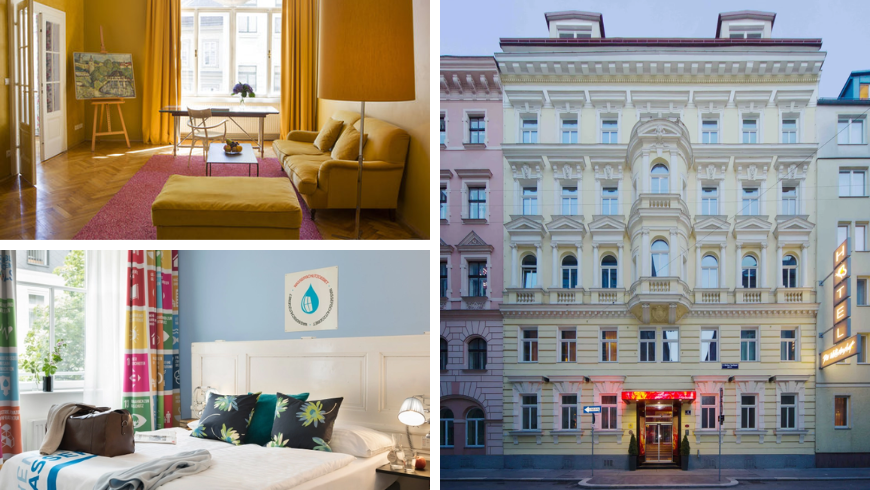
Where to stay during your holiday in Vienna? On Ecobnb you can find various eco-friendly structures.
Hotel Altstadt is the first hotel in Vienna to be awarded the Austrian Ecolabel. The hotel is located in the city center, more precisely in the trendy Boboville am Spittelberg district. The structure boasts 45 rooms and suites, all different from each other, for an artistic experience. The hotel is accessible without a car and you can find organic food at km0. Separate waste collection is also carried out, low-consumption light bulbs are used and water flow reducers are used.
Another interesting hotel is the Stadthalle Boutique Hotel which has 79 individually designed rooms in an upcycling style and also has a lush internal garden where you can relax. The hotel offers electricity which comes from 100% renewable sources and organic food at Km 0. The structure is accessible without a car, the cleaning products are ecological, separate waste collection is carried out and low-energy light bulbs are installed, as well as solar panels for hot water and water flow reducers.
The family-run hotel Der Wilhelmshof is located near the old town and has been awarded the Österreischischen Ecolabel. Electricity comes from 100% renewable sources and food is organic and km0. The hotel is accessible by car, separate waste collection is carried out, and low-consumption light bulbs and solar panels for water are installed.
Therefore, if you want to visit Vienna in an eco-sustainable and environmentally friendly way, do not delay any longer and book your next holiday!
Cover image: Vienna, Schönbrunn Palace, image via Canva PRO
